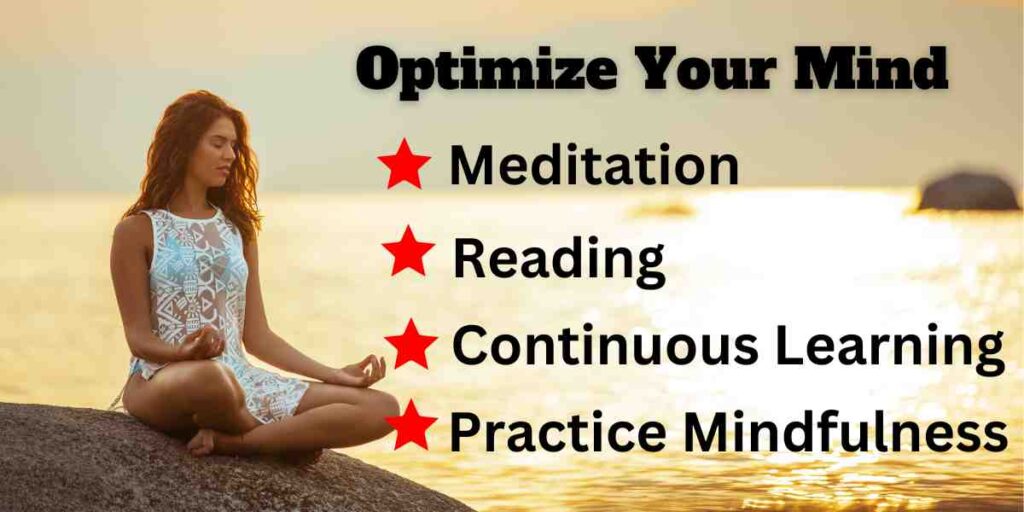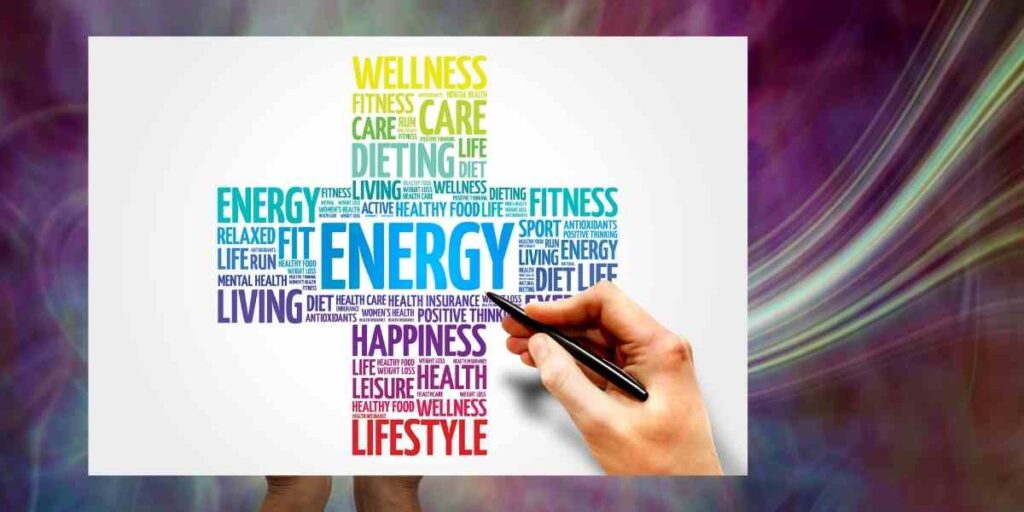How To Optimize Your Daily Life: 7 Success Optimization Techniques
Are you feeling stuck in your journey towards personal and professional success?
Do you find yourself wondering why you’re not operating at your peak efficiency and effectiveness?
If these questions resonate with you, it’s time to explore the concept of optimization in your quest for success. Optimization involves the continuous process of making adjustments and improvements in various aspects of your life, fine-tuning your habits, routines, and mindsets to better align with your goals and aspirations.
This strategic approach goes beyond mere productivity enhancements; it fosters a profound sense of fulfillment and well-being by ensuring that every aspect of your life is operating in harmony with your ultimate objectives.
The importance of daily improvements cannot be overstated. Small, incremental changes accumulate over time, leading to significant transformations. By focusing on optimizing different facets of our lives each day, we empower ourselves to overcome obstacles, seize opportunities, and achieve a level of success that resonates deeply with our personal values and professional ambitions.
How To Optimize Your Daily Life: 7 Success Optimization Techniques

This blog post delves into 7 key areas that are crucial for optimization to achieve success. These areas include:
- Optimize Your Mind: Cultivating a growth mindset and sharpening cognitive functions to enhance decision-making and creativity.
- Optimize Your Body: Maintaining physical health through exercise, nutrition, and rest, which in turn supports mental and emotional well-being.
- Optimize Your Work Efficiencies: Increasing productivity and efficiency at work by managing time effectively, prioritizing tasks, and leveraging technology.
- Optimize Your Space: Creating an environment that promotes focus, inspiration, and productivity, whether at home or in the workplace.
- Optimize Your Expectations: Setting realistic goals and expectations to motivate continuous progress while avoiding disappointment and burnout.
- Optimize Your Energy: Managing physical and emotional energy to sustain high levels of engagement and resilience throughout the day.
- Optimize Your Action: Ensuring that daily actions are aligned with long-term goals, thereby making consistent progress towards achieving them.
By exploring these areas, this post aims to provide actionable insights and strategies that readers can apply to their daily lives. The goal is to empower individuals to make informed, conscious decisions that lead to optimized performance and, ultimately, a more successful and satisfying life.
Table of Contents
1. Optimize Your Mind

Introduction to Mind Optimization
The mind is the command center of our entire being, influencing our thoughts, actions, and reactions to the world around us. Having a clear and focused mind is paramount for navigating the complexities of daily life and achieving our highest potential. Mind optimization is about enhancing mental clarity, focus, and cognitive abilities to improve overall performance in personal and professional realms. It’s the process of training the mind to think more effectively and efficiently, leading to better problem-solving skills, creativity, and decision-making. This mental clarity and focus are essential for success, as they enable individuals to set goals, devise strategies, and execute plans with precision and effectiveness.
Strategies for Optimization
- Meditation: Regular meditation practice is a powerful tool for mind optimization. It helps in reducing mental clutter, increasing concentration, and promoting emotional stability. By quieting the mind, meditation allows for deeper self-reflection and mindfulness, leading to greater mental clarity.
- Reading: Engaging with a variety of reading materials expands knowledge, enhances vocabulary, and stimulates cognitive function. Reading not only provides new information but also encourages critical thinking and imagination, contributing to a more agile and adaptive mind.
- Continuous Learning: The pursuit of lifelong learning keeps the mind active and engaged, fostering intellectual curiosity and cognitive growth. Whether through formal education, online courses, workshops, or self-study, continuous learning challenges the brain, promoting mental flexibility and adaptability.
- Practicing Mindfulness: Mindfulness involves being fully present and engaged in the moment, without judgment. Practicing mindfulness through daily activities can improve focus, reduce impulsivity, and enhance emotional regulation. It trains the mind to respond rather than react, leading to more deliberate and thoughtful decision-making.
Benefits
- Improved Decision-Making: A clear and optimized mind can assess situations more accurately and choose the best course of action among various alternatives. This leads to more effective problem-solving and strategic planning.
- Enhanced Creativity: With reduced mental clutter and increased focus, creativity flourishes. An optimized mind is better able to connect disparate ideas, think outside the box, and generate innovative solutions.
- Reduced Stress Levels: Mind optimization strategies like meditation and mindfulness can significantly lower stress levels. By promoting a calm and focused mental state, individuals can better manage stressors, leading to improved emotional and psychological well-being.
Optimizing the mind is a foundational step in achieving success. It enables individuals to harness their full cognitive potential, navigate life’s challenges with grace, and realize their goals with confidence and clarity.
2. Optimize Your Body

Introduction to Body Optimization
The connection between physical health and success is both profound and multifaceted. A healthy, well-optimized body serves as the foundation for peak performance in all areas of life. Physical health impacts not only our ability to perform daily tasks but also influences our mental clarity, emotional stability, and overall quality of life. Body optimization involves taking proactive steps to enhance physical well-being through exercise, nutrition, rest, and other healthful practices. This holistic approach ensures that the body is not only free from illness but is also functioning at its best, enabling individuals to pursue their goals with vigor and resilience.
Strategies for Optimization
- Regular Exercise: Engaging in consistent physical activity is crucial for maintaining and improving health. Exercise strengthens the heart, muscles, and bones, boosts metabolism, and enhances flexibility and balance. It also plays a significant role in preventing chronic diseases. Whether it’s cardio, strength training, yoga, or any other form of physical activity, finding a routine that is enjoyable and sustainable is key.
- Balanced Diet: A nutritious diet provides the energy and nutrients necessary for optimal body function. Consuming a variety of fruits, vegetables, lean proteins, whole grains, and healthy fats ensures that the body receives a balanced mix of essential vitamins, minerals, and antioxidants. Proper nutrition supports all bodily functions, aids in the maintenance of a healthy weight, and reduces the risk of disease.
- Adequate Sleep: Quality sleep is a cornerstone of good health. It allows the body and mind to rest, recover, and regenerate. Adequate sleep improves cognitive function, emotional regulation, and physical health. It is essential for healing and repairing the heart and blood vessels, and it helps in balancing hormones that control appetite and metabolism.
- Hydration: Staying well-hydrated is crucial for maintaining optimal bodily functions. Water regulates body temperature, lubricates joints, transports nutrients, and removes waste. Adequate hydration also impacts energy levels and cognitive performance. Drinking sufficient amounts of water throughout the day is a simple yet effective way to optimize physical health.
Benefits
- Increased Energy Levels: Proper exercise, nutrition, sleep, and hydration work together to boost energy levels, making it easier to tackle daily tasks and engage in activities that drive success.
- Improved Mental Health: Physical health and mental health are closely linked. Regular physical activity and a healthy diet can reduce symptoms of depression and anxiety, improve mood, and enhance overall well-being.
- Better Physical Endurance: A well-optimized body can endure more physical activity and stress without getting fatigued easily. This increased endurance is beneficial not only in personal life but also in professional settings, where sustained energy and performance are often required.
Optimizing your body is not just about achieving a certain aesthetic; it’s about creating a strong, resilient vessel that supports your efforts to achieve success in all areas of life. By prioritizing physical health, you set the stage for improved performance, heightened well-being, and a greater capacity to achieve your goals.
Read the Detailed Blog post:
Top 7 Secrets to a Healthy Lifestyle: A Comprehensive Guide
3. Optimize Your Work Efficiencies

Introduction to Work Efficiency
In today’s fast-paced and competitive environment, productivity and efficiency at work are more important than ever. Achieving work efficiency means maximizing outputs while minimizing time and resources spent. This not only contributes to the success of organizations but also enhances individual satisfaction and work-life balance. Efficient work practices allow professionals to meet their objectives with precision and excellence, paving the way for career advancement and personal fulfillment. The optimization of work efficiencies is about identifying and refining processes, tools, and habits that lead to more effective work and better outcomes.
Strategies for Optimization
- Time Management Techniques: Effective time management is fundamental to work efficiency. This includes planning your day with a clear schedule, setting realistic deadlines, and using techniques like the Pomodoro Technique or time blocking to focus intensely on tasks. Mastering time management helps in allocating resources where they’re most needed, ensuring that critical tasks are completed within deadlines.
- Prioritization: Understanding how to prioritize tasks is crucial for efficient work. The Eisenhower Matrix, which categorizes tasks based on urgency and importance, can help in identifying which tasks to focus on immediately, plan for later, delegate, or eliminate. This ensures that efforts are concentrated on activities that have the most significant impact.
- Automation of Repetitive Tasks: In the digital age, automation tools can take over repetitive and time-consuming tasks. From email management to data entry and social media scheduling, automation software can free up valuable time for more strategic activities that require human insight and creativity.
- Elimination of Distractions: Distractions in the workplace significantly hinder productivity. Creating a distraction-free environment might involve using apps that block distracting websites, setting specific times to check emails and messages, or optimizing the physical workspace to minimize interruptions. Focusing deeply on tasks without distractions leads to higher quality work in less time.
Benefits
- Higher Productivity: By employing these strategies, individuals can complete more tasks in less time, leading to higher overall productivity. This efficiency not only benefits the organization but also contributes to a sense of achievement and satisfaction.
- Better Work Quality: With focused attention and the right priorities, the quality of work improves. Efficient work processes allow for more time to review, refine, and ensure that outputs meet the highest standards.
- More Time for Personal Growth: Optimizing work efficiencies frees up time that can be invested in personal development, learning new skills, or pursuing hobbies and interests. This balance between professional and personal life is essential for long-term career success and personal well-being.
Optimizing work efficiencies is not just about doing more in less time; it’s about smarter work that leads to better results and more fulfilling careers. By focusing on time management, prioritization, automation, and the elimination of distractions, individuals can significantly enhance their work performance and contribute to their overall success.
4. Optimize Your Space

Introduction to Space Optimization
The environment in which we work plays a critical role in shaping our productivity, creativity, and overall well-being. Space optimization refers to the deliberate arrangement and organization of our workspaces to foster an atmosphere that enhances focus, efficiency, and comfort. An optimized space can significantly reduce distractions, boost motivation, and contribute to a healthier work-life balance. It’s about creating a physical setting that aligns with our personal and professional needs, enabling us to perform at our best.
Strategies for Optimization
- Organizing the Workspace: A clutter-free and well-organized workspace can drastically improve focus and efficiency. This involves keeping only essential items within reach, using storage solutions to keep supplies organized, and regularly decluttering to maintain a tidy environment. An organized space can streamline work processes, making it easier to find what you need and focus on the task at hand.
- Ensuring Proper Lighting: Adequate lighting is vital for reducing eye strain and improving mood. Natural light is ideal, so arranging your workspace to maximize exposure to natural light can have a positive impact on your energy levels and productivity. If natural light is not sufficient, investing in quality desk lamps that mimic natural light can also help create an optimal working environment.
- Personalizing Your Space for Inspiration: Personalizing your workspace with items that inspire and motivate you can make a significant difference in your workday. This could include photos of loved ones, artwork, inspirational quotes, or plants. These personal touches not only make your space more pleasant but also serve as reminders of your goals and the reasons behind your hard work.
Benefits
- Enhanced Focus: By minimizing clutter and distractions, an optimized workspace helps maintain higher levels of concentration. This focused environment enables you to complete tasks more efficiently and with greater accuracy.
- Increased Productivity: A well-organized and thoughtfully arranged workspace can streamline your work processes, making it easier to transition between tasks smoothly and quickly. The physical space becomes a catalyst for productivity, rather than a barrier.
- A More Enjoyable Work Environment: Personalizing your space and ensuring comfort can transform your work area into a place you enjoy spending time in. A pleasant work environment not only improves mood but also increases job satisfaction and well-being.
Optimizing your space is about more than just aesthetics; it’s about creating a conducive environment that supports your workflow, sparks creativity, and enhances your overall quality of life. By investing time in organizing, lighting, and personalizing your workspace, you set the stage for a more productive, enjoyable, and successful work experience.
5. Optimize Your Expectations

Introduction to Expectation Optimization
Expectation optimization plays a crucial role in the journey towards success. It involves setting realistic and achievable expectations for oneself and one’s endeavors. This practice is fundamental because it helps to balance ambition with practicality, ensuring that goals are challenging yet attainable. Unrealistic expectations can lead to disappointment, stress, and a sense of failure, whereas optimized expectations can motivate and guide us towards sustained progress and achievement. By aligning our expectations with our capabilities and circumstances, we can pursue our goals more effectively and with a healthier mindset.
Strategies for Optimization
- Setting Achievable Goals: Begin with defining clear, specific, and realistic goals that are aligned with your abilities, resources, and time constraints. Use the SMART criteria (Specific, Measurable, Achievable, Relevant, Time-bound) to formulate goals that not only challenge you but also are within reach given your current situation.
- Adjusting Expectations Based on Feedback: Stay open to feedback and willing to adjust your expectations as you progress towards your goals. Feedback, whether from peers, mentors, or personal reflection, provides valuable insights into what’s working and what’s not. Use this information to recalibrate your expectations and strategies as needed, ensuring they remain realistic and aligned with your evolving capabilities and circumstances.
- Celebrating Small Wins: Recognize and celebrate the small achievements along your journey. This practice helps in maintaining motivation and positivity, even when facing challenges. Celebrating small wins reinforces the value of incremental progress and keeps you engaged and committed to your long-term objectives.
Benefits
- Reduced Frustration: By setting realistic expectations, you’re less likely to encounter the frustration that comes from falling short of unattainable standards. This approach helps in managing stress and maintaining a positive outlook, even when obstacles arise.
- Increased Motivation: Optimized expectations provide a clear and achievable target to work towards. This clarity and attainability foster a sense of progress and accomplishment, which in turn fuels motivation and perseverance.
- Better Alignment with Long-term Objectives: Realistic expectations keep you grounded and focused on the bigger picture. By ensuring that your daily actions and goals are in harmony with your long-term aspirations, you can make consistent, meaningful progress without becoming overwhelmed or losing direction.
Optimizing your expectations is about finding the sweet spot where your ambitions meet your reality. It’s a strategy that not only promotes success but also supports a healthier, more satisfying approach to personal and professional development. By setting achievable goals, being responsive to feedback, and celebrating the journey’s milestones, you can navigate the path to success with confidence and resilience.
6. Optimize Your Energy

Introduction to Energy Optimization
Energy optimization is a critical aspect of achieving and maintaining peak performance in both personal and professional spheres. It involves managing and investing our physical, mental, and emotional energy wisely to ensure that we can sustain productivity and motivation over the long term. Understanding how to effectively allocate our energy can help us avoid burnout, enhance our well-being, and improve our resilience to stress. This concept recognizes that our energy is a finite resource and that strategic management of this resource is essential for maximizing our potential and achieving our goals.
Strategies for Optimization
- Identifying Energy Drainers and Boosters: Begin by recognizing the activities, environments, and relationships that either deplete or replenish your energy. This may involve tracking your energy levels throughout the day and noting the impact of different tasks and interactions. Once identified, seek to minimize exposure to energy drainers and increase engagement with energy boosters.
- Balancing Work and Rest: Implementing a balanced routine that includes adequate rest and recovery time alongside productive work is essential for sustainable energy management. Use techniques such as the Pomodoro Technique for work breaks, ensure you have a regular sleep schedule, and incorporate leisure and downtime to recharge.
- Emotional Regulation: Managing emotional energy is just as important as managing physical energy. Techniques for emotional regulation include mindfulness, meditation, deep breathing exercises, and developing a positive mindset. By learning to control emotional responses and maintain a balanced emotional state, you can prevent unnecessary energy expenditure on stress, anxiety, and negative emotions.
Benefits
- Sustained Productivity: By managing energy wisely, you can maintain a consistent level of productivity without falling into cycles of burnout and recovery. This steady productivity allows for ongoing progress towards your goals.
- Improved Well-Being: Energy optimization contributes to overall well-being by reducing stress and fatigue. When you balance work and rest, and manage your emotional energy, you enhance your physical health, mental clarity, and emotional stability.
- Enhanced Resilience: With a well-managed energy reservoir, you’re better equipped to handle challenges and setbacks. Energy optimization builds resilience by ensuring that you have the capacity to bounce back from difficulties and continue pursuing your objectives with determination.
Optimizing your energy requires a conscious effort to understand and influence where your energy goes. By focusing on strategies that identify and adjust your energy consumption and replenishment, you can create a more balanced, productive, and fulfilling life. The ability to manage your energy effectively sets the foundation for sustained success and an improved quality of life.
7. Optimize Your Action
Introduction to Action Optimization
Action optimization is the process of refining and aligning your actions to ensure they are consistently contributing to the achievement of your goals. It underscores the importance of not just any action, but deliberate and goal-oriented actions that drive progress. This approach is about making each effort count, ensuring that activities are both efficient and effective. By optimizing actions, individuals can avoid the common pitfalls of aimless effort or misdirected energy, focusing instead on strategies that propel them towards their objectives with precision and purpose.
Strategies for Optimization
- Breaking Down Goals into Actionable Steps: Large goals can be overwhelming and may seem unattainable when approached as a whole. By breaking them down into smaller, manageable tasks, you make the journey towards achieving them more accessible and less daunting. This breakdown also allows for clearer planning and prioritization, making it easier to take consistent steps towards your goals.
- Creating a Routine: Establishing a routine that incorporates time for focused work on your goals can significantly enhance productivity. A well-structured routine reduces the need for daily decision-making about when and how to work towards your objectives, making it easier to maintain momentum and discipline. Consistency in action is key to making tangible progress.
- Utilizing Feedback Loops: Feedback, whether from self-assessment, peers, mentors, or results, is invaluable for action optimization. It provides insights into what is working and what isn’t, allowing for real-time adjustments to strategies and methods. Embracing a feedback loop ensures that actions are continually refined and aligned with the ultimate goals, enhancing the effectiveness of efforts.
Benefits
- Steady Progress Towards Goals: Optimized action leads to a more structured and intentional approach to goal achievement, ensuring steady and measurable progress. This consistent forward movement is motivating and builds momentum, making even the most ambitious goals attainable over time.
- Enhanced Adaptability: With regular feedback and a willingness to adjust actions based on that feedback, individuals become more adaptable and flexible. This adaptability is crucial in today’s fast-paced and ever-changing environment, allowing for pivots and shifts in strategy that keep goals within reach despite obstacles.
- Increased Achievement Rate: By focusing on the most relevant and impactful actions, optimizing your efforts leads to a higher rate of achievement. Efficiently directed actions reduce wasted effort and resources, maximizing the return on every effort made towards reaching objectives.
Optimizing your action is about embracing a strategic approach to goal achievement. It involves thoughtful planning, disciplined execution, and an ongoing process of evaluation and adjustment. This holistic strategy ensures that every action taken is a step towards the realization of your aspirations, transforming ambition into tangible success.
Conclusion
In our journey towards achieving success, the optimization of our mind, body, work efficiencies, space, expectations, energy, and actions plays a pivotal role. Each area is a critical component that contributes to our overall productivity, well-being, and satisfaction. By cultivating a clear and focused mind, maintaining physical health, enhancing work efficiencies, creating an inspiring workspace, setting realistic expectations, managing our energy wisely, and taking consistent, goal-aligned actions, we set ourselves up for sustained progress and achievement. These seven key areas of optimization provide a comprehensive framework for personal and professional development, enabling us to maximize our potential and reach our goals more effectively.
As we strive for success, integrating these optimizations into our daily routine can lead to profound improvements in how we live and work. It’s about making small, deliberate changes that cumulatively enhance our quality of life and propel us towards our aspirations. I encourage you to embrace these strategies, adapting and applying them in a manner that resonates with your unique circumstances and objectives. Remember, “The secret of your future is hidden in your daily routine,” as Mike Murdock once said. Let the pursuit of optimization be the compass that guides you to your definition of success, transforming aspirations into realities through disciplined action and self-improvement.
References and Resources for Practice
To further explore and implement the principles of optimization in various aspects of your life, the following references and resources can be invaluable. They offer insights, strategies, and practical advice for enhancing productivity, well-being, and overall success.
Books
- “Atomic Habits” by James Clear: Offers a comprehensive guide to building good habits and breaking bad ones, emphasizing small changes that lead to significant improvements over time.
- “Deep Work” by Cal Newport: Focuses on the benefits of focused work and offers strategies for minimizing distractions to achieve more in less time.
- “The 7 Habits of Highly Effective People” by Stephen R. Covey: A classic personal development book that outlines seven principles for personal and professional effectiveness.
- “Mindset: The New Psychology of Success” by Carol S. Dweck: Explores the concept of “fixed” vs. “growth” mindsets and how a growth mindset can lead to success in various areas of life.
- “The Power of Full Engagement” by Jim Loehr and Tony Schwartz: Discusses managing energy rather than time as the key to high performance and personal renewal.
Online Resources
- TED Talks: TED offers countless talks on topics related to personal development, productivity, and success. Speakers from diverse fields share their insights and experiences on optimizing various aspects of life.
- Coursera and Udemy: These platforms offer courses on time management, personal development, health and wellness, and much more. Look for courses that focus on the areas you’re interested in optimizing.
- Mindful.org: A resource for mindfulness and meditation practices. It provides articles, practices, and research on how mindfulness can improve mental clarity and reduce stress.
- Lifehacker: Offers tips, tricks, and downloads for getting things done more efficiently, covering a wide range of topics from productivity hacks to software recommendations.
Apps and Tools
- Trello or Asana: Project management tools that can help organize tasks, projects, and goals, making it easier to prioritize and track progress.
- Headspace or Calm: Meditation apps that offer guided meditation sessions to improve mindfulness and reduce stress.
- MyFitnessPal: A mobile app and website that tracks diet and exercise to help maintain optimal physical health.
- Habitica: A gamified task management app that helps build habits by turning daily tasks and goals into a role-playing game.
These resources provide a starting point for diving deeper into the optimization of mind, body, work efficiencies, space, expectations, energy, and actions. By engaging with these materials and integrating their lessons into your life, you can begin to make meaningful changes that propel you towards your goals and enhance your overall success.
Learn More About Blogging. Check HERE

